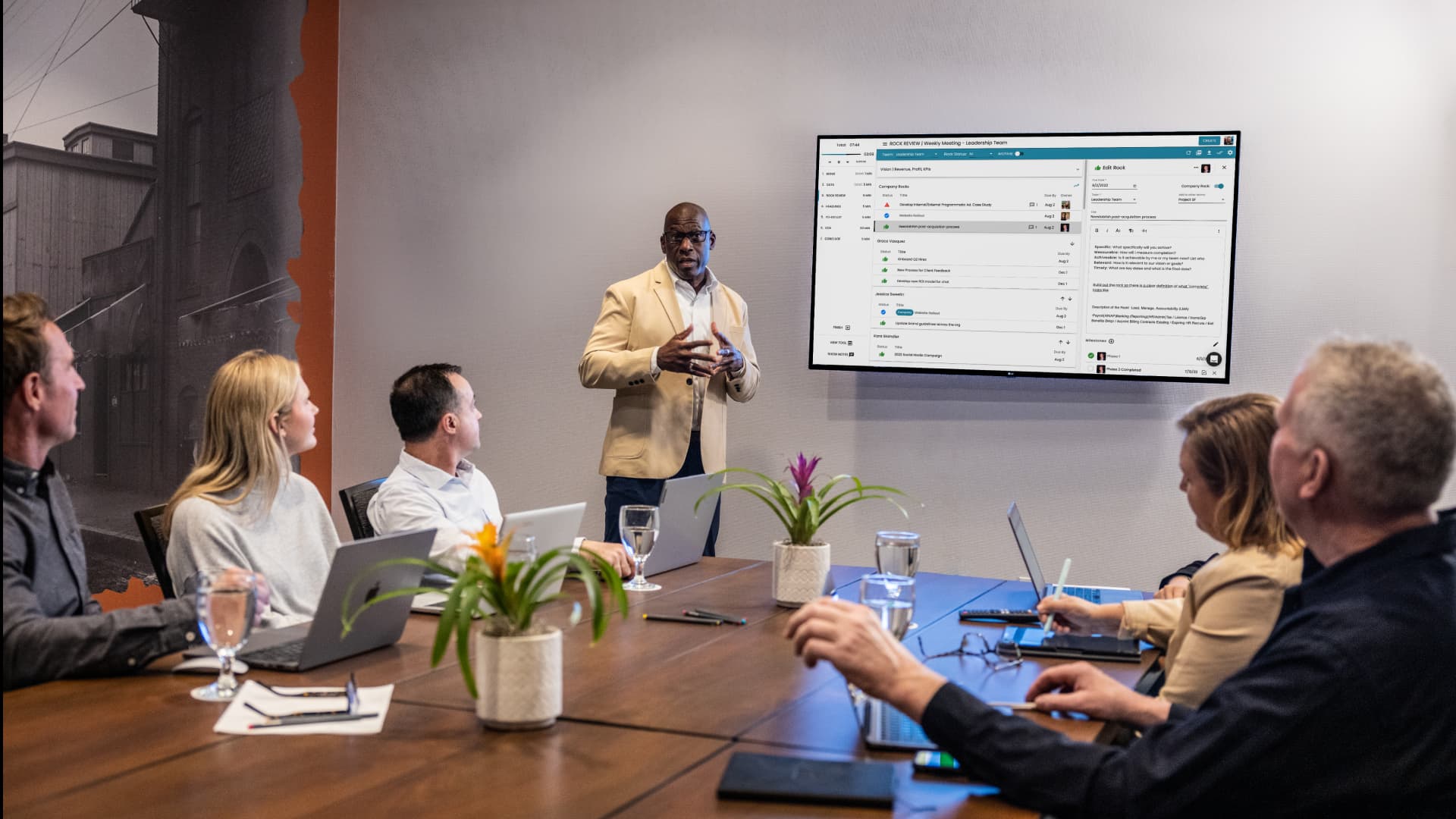


Successful, productive meetings rely on clear objectives, active attendee participation, and agreements on necessary follow-up actions. The trick is determining which meeting will fully meet your purpose. We’ll offer a few guidelines, matching various types of meetings with a format that will help maximize the meeting’s impact. Ask anyone how many different meetings they have at their company, and you’ll likely need to wait a few beats for an answer. Truth is, there are many types of meetings, and it can be tough to sort through them all. Different companies “brand” certain meetings certain ways. For example, one company’s “brainstorm session” is another’s “creative huddle.” In the end, it all tends to blend. So let’s not get too bogged down with how many meetings we have. Let’s instead align around the essential types of meetings that are critical to hitting milestones, achieving goals, and advancing toward your long-term vision, along with other meetings that are necessary for unifying and informing team members. By holding the types of meetings we’ll outline below — and holding them on a regular cadence with clear and consistent agendas, firm start and end times, and a deep respect for showing up before they start — organizations will almost eliminate the need for last-minute, reactive, ad hoc meetings. This is one of the core disciplines we consistently see in well-run organizations. Now, ask anyone how they feel about THAT, and you won’t have to wait at all for an enthusiastic “Yes, please!”
For readers of our series on meetings, it’s our hope we’ve done a decent job establishing the notion that having an effective agenda is essential for consistently productive meetings.
According to the Harvard Business Review (HBR), 9 out of 10 people daydream in meetings. And 73% admit to multitasking in those meetings, as well. Safe to say, those people are not engaged, right? We’d argue that’s because many meetings aren’t conducted — or constructed — for its attendees. The critical flaw, according to HBR, is a lack of “designing” the meeting for those who attend 1 .
We don’t see this flaw exhibited in well-run organizations. Instead, a consistent, effective agenda, along with some simple disciplines, is the anchor for every meeting, and it’s no accident that those organizations have few, if any, reactive meetings. The recurring meetings, properly constructed, get the job done with clear follow-ups and action items.

That’s because those organizations have figured out what the goals and objectives are for the people that attend their recurring meetings… which means they’re maximizing the time spent together in that conference room or virtual meeting room.
For organizations that aren’t quite there or don’t have a great handle on constructing an effective agenda, we can help; our Meetings tool includes time-tested agendas that are customizable for many essential meetings.
The definition of “essential” for businesses can vary based on size, organizational maturity, and other factors. But at Ninety, we feel the following meetings — which we’ve consistently run with great success — are truly essential. Following an established cadence and suggested duration for each meeting, organizations will find themselves more focused and aligned as they pursue the short- and long-term goals that will help sustain success.

What’s more, this meeting is key to setting up a productive conversation in quarterly 1-on-1 reviews, and the weekly cadence is critical to keep leaders and team members healthily connected. It’s also an opportunity for those leaders and coaches to show their commitment to help people grow, expand their experiences and competencies, and make them more valuable in the marketplace. Great coaches care about the person in front of them, but even more, the person they can become. Weekly 1-on-1s are building blocks to that end.
Quarterly Planning Meeting (QPM)
These day-long, recurring meetings are held once a quarter (approximately every 90 days). QPMs provide a space for teams to sit back and assess progress toward those long-term, “10x” goals we call Compelling and Audacious Goals (CAGs). More importantly, teams have a chance to reflect on and celebrate our work.
Quarterlies are a time for us to let daily stressors take a back seat while we look forward and focus on our Vision instead. Coming out of a QPM, a team should have identified the 90-day goals — we call them “Rocks” — that ladder up to longer-term 1- and 3-year goals.
With new 1-year goals, the SLT, the departments and every team will have a clear line of sight on what needs to happen each quarter to turn that part of their Vision into reality.
At Ninety, we hold these feedback meetings because we find annual reviews to be problematic. The sheer amount of effort it takes to recount a full year’s worth of work, the likelihood of performance goals shifting through the year, and the notion of recency bias are just a few reasons. Beyond that, the quarterly allows for discussion of issues that can be resolved without waiting months to do so.

Beyond the meetings we deem essential, there's great value in the following types of meetings, as well. These meetings keep us healthily connected and allow for a more informal sharing of information, whether it’s project-related work or something that aligns with a particular passion or pursuit.
When you read through all of these meeting types, it can feel overwhelming for sure. Every company is different, as are their needs. That said, we deeply believe that organizations that implement the Essential Types of Meetings are far more likely to not only build extraordinarily productive, humane, and resilient organizations but also teams that are focused, aligned, and thriving.
And, if that isn’t compelling enough, consider that implementing these meetings will materially reduce the need for most of your spontaneous and reactive meetings. If you think about it, one way to measure the health of an organization is how often it needs to have either non-recurring or ad hoc/reactive meetings. Imagine the day where that number is nearing zero…
Streamline Your Meetings and Boost Productivity for Free
Want to make every meeting count? Ninety can help. Introducing Meetings, one of the tools in Ninety’s business operating system suite that automates meetings, streamlines collaboration, and maximizes productivity. Try it today and see the difference for yourself.
